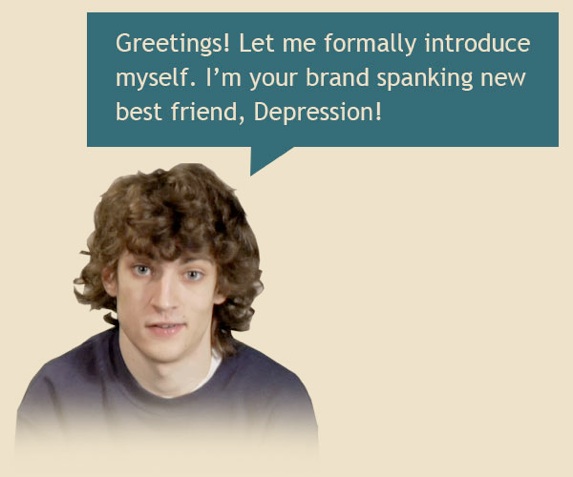Latest Public Service Radio Minute
Loss of EmploymentLoss of Employment, MP3, 1.3MB
Listen to or download all our PSAsSupport Our Work
Please donate so we can continue our work to reduce the stigma of psychiatric illness, encourage research, and support educational activities for behavioral health professionals and the public. Ways you can donate and help are on our Support and Donations page. Thank you!
More InfoLatest News Around the Web
Vulnerable Subgroups Of Veterans May Have Increased Risk For Cannabis Use Disorder And Nonmedical Use, Survey Study Indicates
Healio (8/24, Gramigna) reports, “Vulnerable subgroups of veterans had increased risk for cannabis use disorder and nonmedical use,” investigators concluded after analyzing data from “3,119 U.S. veterans who responded to the 2012 to 2013 National Epidemiologic Survey on Alcohol and Related Conditions-III.” The findings of the survey study were published online Aug. 19 in the American Journal of Psychiatry, a publication of the American Psychiatric Association.
Among veterans, the odds of nonmedical cannabis use and use disorder were elevated among vulnerable subgroups, including those with lower income or psychiatric disorders and among survey participants residing in states with medical marijuana laws.
Related Links:
— “Sociodemographic factors impact veterans’ risk for cannabis use disorder “Joe Gramigna, Healio , August , 2021
Police Videos Showcasing Lifesaving Suicide-Prevention Efforts May Exploit Those Victims Law Enforcement Just Saved, Mental Health Advocates And Experts Contend
The AP (8/23, Dazio) reports that according to experts and some mental health advocates, short video clips “posted on official law enforcement social media accounts, part of a longstanding practice by police agencies to showcase their lifesaving efforts online,” should be looked at “with an eye toward whether they exploit the very victims law enforcement just saved.” For example, “the American Association of Suicidology specifically suggests that any reporting on suicide or suicide attempts not include the method or location,” and even “recommends that photos and videos from the scene also be excluded, even if the person’s identity is concealed.” Meanwhile, “Daniel Reidenberg, executive director of the Minnesota-based Suicide Awareness Voices of Education, said such social media posts may actually deter viewers from calling 911, for fear they might also get handcuffed or arrested.”
Related Links:
— “Mental health online: Police posts of crises may traumatize “Stefanie Dazio, AP, August 23, 2021
Certain Driving, Financial Behaviors May Indicate Pathologies Underlying Brain Decline Years Before Symptoms Of Dementia Emerge, Studies Indicate
In “The New Old Age,” the New York Times (8/23, Span) reports that certain behaviors, such as “overlooking a couple of credit card payments or habitually braking while driving,” may indicate “pathologies underlying brain decline” that “can begin years before symptoms” of dementia emerge. For example, one study published online June 14 in Alzheimer’s Research & Therapy that “enrolled 64 older adults with preclinical Alzheimer’s, as determined by spinal taps (the results were not shared with participants), and 75 who were deemed cognitively normal,” revealed that “driving behavior and age could predict preclinical Alzheimer’s 88 percent of the time.” Likewise, a study published last November in JAMA Internal Medicine that analyzed “medical records and consumer credit reports for more than 80,000 Medicare beneficiaries showed that seniors who eventually received a diagnosis of Alzheimer’s disease were significantly more likely to have delinquent credit card payments than those who were demographically similar but never received such diagnoses,” and were also “more likely to have subprime credit scores.”
Related Links:
— “Seeking Early Signals of Dementia in Driving and Credit Scores ” Paula Span, The New York Times, August 23, 2021
Exacerbated By COVID-19 Pandemic, Suicide A Growing Crisis For Communities Of Color
Kaiser Health News (8/23, Pattani) reports, “Interviews with a dozen suicide researchers, data collected from states across the country and a review of decades of research revealed that suicide is a growing crisis for communities of color – one that plagued them well before the” COVID-19 pandemic “and has only been exacerbated since.” In fact, “research shows Black kids younger than 13 die by suicide at nearly twice the rate of white kids and, over time, their suicide rates have grown even as rates have decreased for white children.” Among adolescents and “young adults, suicide deaths have increased more than 45% for Black Americans and about 40% for Asian Americans in the seven years ending in 2019.” The pandemic has only “intensified” societal “hardships among communities of color, with disproportionate numbers of lost loved ones, lost jobs and lost housing.” Investigators “say the promise of a good future is often overlooked in suicide prevention, perhaps because achieving it” does require “economic and social growth and breaking systemic barriers.”
Related Links:
— “Pandemic Unveils Growing Suicide Crisis for Communities of Color “Aneri Pattani, aiser Health News, August 23, 2021
Small Survey Study Examines Attitudes Toward Telehealth Care Among Patients With SUDs
Psychiatric News (8/20) reported, “Patients with substance use disorders (SUDs) who have used telehealth services during the COVID-19 pandemic are largely satisfied with the quality of care they receive,” investigators concluded in a 58-patient survey study, the findings of which were published online Aug. 17 in the American Journal on Addictions.
Related Links:
— “Telehealth Finds Favor Among Patients With Substance Use Disorders, Psychiatric News, August 20, 2021
Foundation News
Nothing Found
It seems we can’t find what you’re looking for. Perhaps searching can help.

